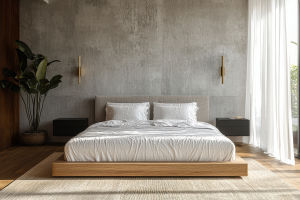Have you ever stepped into a room and instantly felt a shift in your mood? Maybe you felt calm and relaxed, or energized and ready to take on the day.
That powerful, often subconscious reaction is largely influenced by color—the silent language of our surroundings that communicates directly with our emotions.
Understanding how to choose the right color palette for your home can not only make your space more beautiful but also improve your well-being and daily life.
Color psychology, the study of how colors affect human behavior and emotions, reveals some fascinating insights. Different hues can stimulate creativity, soothe anxiety, or even increase appetite. Yet, applying this knowledge to your home requires more than just knowing which colors are "happy" or "calming." It demands thoughtful consideration of each room's purpose, lighting, and your personal preferences.
Let's dive deeper into how color influences different spaces in your home and how you can harness its power effectively.
The Science of Color and Emotion
Colors interact with our brain through wavelengths that trigger various emotional and physical responses. Warm colors like red, orange, and yellow tend to evoke excitement, passion, and energy. Cool colors such as blue, green, and violet are associated with calmness, relaxation, and tranquility.
But the impact of color is not universal—context and individual differences matter. For instance, a bright red might energize one person but feel overwhelming to another. Cultural backgrounds and personal memories also shape color perception.
Research published in the Journal of Environmental Psychology highlights that people's mood and productivity levels can fluctuate significantly based on room colors. This is why choosing a color palette isn't just decorative; it can influence your lifestyle quality.
Creating the Perfect Living Room Palette
Your living room is often where you entertain guests, spend time with family, or relax after a busy day. You want a palette that balances warmth with comfort.
• Warm neutrals like beige, taupe, and soft browns serve as an inviting base. These shades foster a sense of coziness without overwhelming the senses.
• Adding accents of rich jewel tones such as emerald green or sapphire blue can inject personality and energy without compromising harmony.
Interior designers often recommend layering textures—velvet cushions, wool throws, or wooden furniture—to complement your color scheme and add depth.
Dr. Susan Kramer, a psychologist specializing in environmental design, points out, "Neutral tones paired with strategic pops of color create spaces where people feel both relaxed and socially engaged."
Bedroom Colors for Restful Sleep
The bedroom should be your retreat—a place to rest and recharge. Colors here play a vital role in promoting relaxation and sleep quality.
• Soft blues and muted greens are known to reduce heart rate and soothe anxiety, helping you drift off more easily.
• Lavender and gentle grays add a touch of sophistication while maintaining tranquility.
Avoid using bright reds or oranges in bedrooms, as these can raise alertness and interfere with sleep cycles.
Consider pairing your chosen colors with blackout curtains and soft lighting to create a restful atmosphere.
Kitchen and Dining Area: Energize and Inspire Appetite
Colors in kitchens and dining rooms can influence how much and how well you eat, as well as encourage social interaction.
• Warm colors like red and yellow stimulate appetite and conversation. They make spaces feel lively and welcoming.
• To prevent overstimulation, balance these with neutral colors like white or pale gray.
According to culinary environment expert Lisa Morales, "Using energetic colors in moderation can create an inviting dining experience without overwhelming the senses."
Adding natural elements such as plants or wooden finishes alongside your color choices can enhance the mood and balance the space.
The Most Important Rule: Trust Your Feelings
While guidelines and scientific research provide helpful frameworks, the most powerful way to choose colors is by listening to your own reactions. Test colors with paint samples on your walls and live with them for a few days. Notice how you feel during morning light, afternoon sun, and evening.
Your home is your sanctuary—colors that resonate with your personality and lifestyle will always outperform trends or rules.
Conclusion: Make Color Your Home's Best Friend
Choosing the right colors is a journey, not a quick decision. When you understand how colors influence mood and function, you can create spaces that truly support your life—whether that's energizing mornings, calming nights, or lively gatherings.
What colors currently make your home feel like "you"? Have you ever changed a room's color and noticed a shift in your mood or habits? Share your experiences and let's explore how color has transformed your space.


